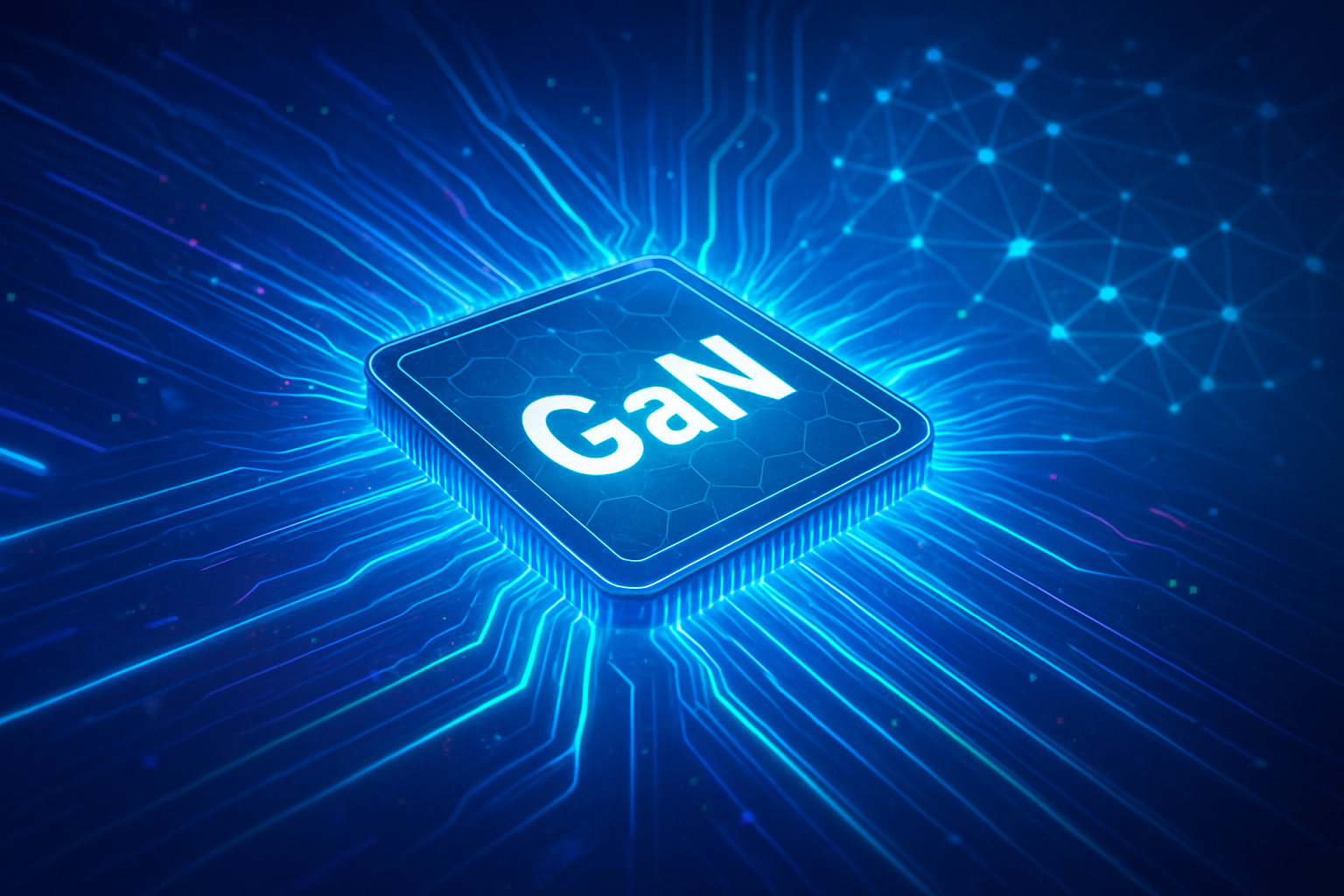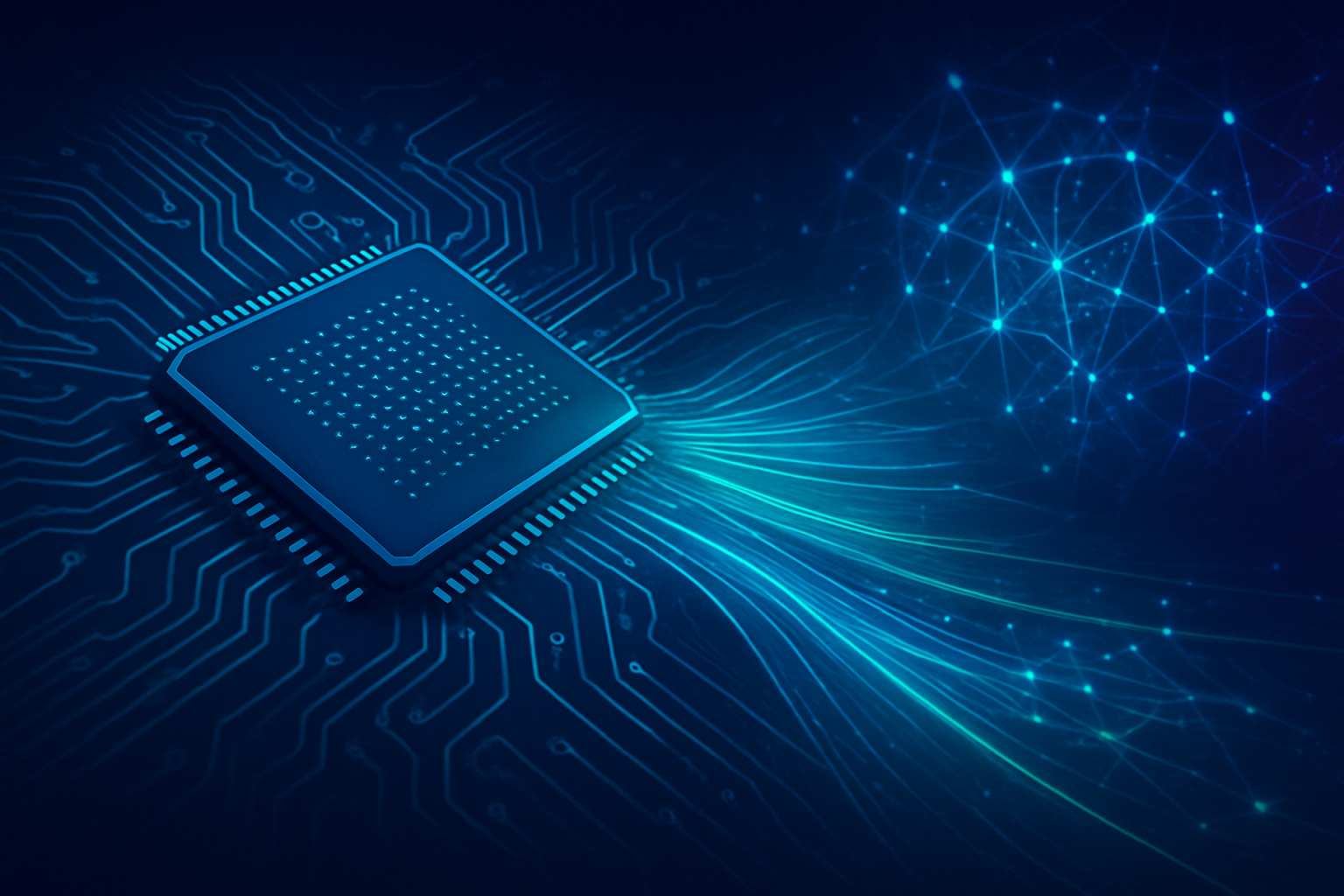November 13, 2025 – The global semiconductor industry is in the midst of an unprecedented boom, driven by the insatiable demand for Artificial Intelligence (AI) and high-performance computing. As of November 2025, the sector is experiencing a robust recovery and is projected to reach approximately $697 billion in sales this year, an impressive 11% year-over-year increase, with analysts confidently forecasting a trajectory towards a staggering $1 trillion by 2030. This surge is not merely a cyclical upturn but a fundamental reshaping of the industry, as companies like Micron Technology (NASDAQ: MU), Seagate Technology (NASDAQ: STX), Western Digital (NASDAQ: WDC), Broadcom (NASDAQ: AVGO), and Intel (NASDAQ: INTC) leverage cutting-edge innovations to power the AI revolution. Their recent stock performances reflect this transformative period, with significant gains underscoring the critical role semiconductors play in the evolving AI landscape.
The immediate significance of this silicon supercycle lies in its pervasive impact across the tech ecosystem. From hyperscale data centers training colossal AI models to edge devices performing real-time inference, advanced semiconductors are the bedrock. The escalating demand for high-bandwidth memory (HBM), specialized AI accelerators, and high-capacity storage solutions is creating both immense opportunities and intense competition, forcing companies to innovate at an unprecedented pace to maintain relevance and capture market share in this rapidly expanding AI-driven economy.
Technical Prowess: Powering the AI Frontier
The technical advancements driving this semiconductor surge are both profound and diverse, spanning memory, storage, networking, and processing. Each major player is carving out its niche, pushing the boundaries of what's possible to meet AI's escalating computational and data demands.
Micron Technology (NASDAQ: MU) is at the vanguard of high-bandwidth memory (HBM) and next-generation DRAM. As of October 2025, Micron has begun sampling its HBM4 products, aiming to deliver unparalleled performance and power efficiency for future AI processors. Earlier in the year, its HBM3E 36GB 12-high solution was integrated into AMD Instinct MI350 Series GPU platforms, offering up to 8 TB/s bandwidth and supporting AI models with up to 520 billion parameters. Micron's GDDR7 memory is also pushing beyond 40 Gbps, leveraging its 1β (1-beta) DRAM process node for over 50% better power efficiency than GDDR6. The company's 1-gamma DRAM node promises a 30% improvement in bit density. Initial reactions from the AI research community have been largely positive, recognizing Micron's HBM advancements as crucial for alleviating memory bottlenecks, though reports of HBM4 redesigns due to yield issues could pose future challenges.
Seagate Technology (NASDAQ: STX) is addressing the escalating demand for mass-capacity storage essential for AI infrastructure. Their Heat-Assisted Magnetic Recording (HAMR)-based Mozaic 3+ platform is now in volume production, enabling 30 TB Exos M and IronWolf Pro hard drives. These drives are specifically designed for energy efficiency and cost-effectiveness in data centers handling petabyte-scale AI/ML workflows. Seagate has already shipped over one million HAMR drives, validating the technology, and anticipates future Mozaic 4+ and 5+ platforms to reach 4TB and 5TB per platter, respectively. Their new Exos 4U100 and 4U74 JBOD platforms, leveraging Mozaic HAMR, deliver up to 3.2 petabytes in a single enclosure, offering up to 70% more efficient cooling and 30% less power consumption. Industry analysts highlight the relevance of these high-capacity, energy-efficient solutions as data volumes continue to explode.
Western Digital (NASDAQ: WDC) is similarly focused on a comprehensive storage portfolio aligned with the AI Data Cycle. Their PCIe Gen5 DC SN861 E1.S enterprise-class NVMe SSDs, certified for NVIDIA GB200 NVL72 rack-scale systems, offer read speeds up to 6.9 GB/s and capacities up to 16TB, providing up to 3x random read performance for LLM training and inference. For massive data storage, Western Digital is sampling the industry's highest-capacity, 32TB ePMR enterprise-class HDD (Ultrastar DC HC690 UltraSMR HDD). Their approach differentiates by integrating both flash and HDD roadmaps, offering balanced solutions for diverse AI storage needs. The accelerating demand for enterprise SSDs, driven by big tech's shift from HDDs to faster, lower-power, and more durable eSSDs for AI data, underscores Western Digital's strategic positioning.
Broadcom (NASDAQ: AVGO) is a key enabler of AI infrastructure through its custom AI accelerators and high-speed networking solutions. In October 2025, a landmark collaboration was announced with OpenAI to co-develop and deploy 10 gigawatts of custom AI accelerators, a multi-billion dollar, multi-year partnership with deployments starting in late 2026. Broadcom's Ethernet solutions, including Tomahawk and Jericho switches, are crucial for scale-up and scale-out networking in AI data centers, driving significant AI revenue growth. Their third-generation TH6-Davisson Co-packaged Optics (CPO) offer a 70% power reduction compared to pluggable optics. This custom silicon approach allows hyperscalers to optimize hardware for their specific Large Language Models, potentially offering superior performance-per-watt and cost efficiency compared to merchant GPUs.
Intel (NASDAQ: INTC) is advancing its Xeon processors, AI accelerators, and software stack to cater to diverse AI workloads. Its new Intel Xeon 6 series with Performance-cores (P-cores), unveiled in May 2025, are designed to manage advanced GPU-powered AI systems, integrating AI acceleration in every core and offering up to 2.4x more Radio Access Network (RAN) capacity. Intel's Gaudi 3 accelerators claim up to 20% more throughput and twice the compute value compared to NVIDIA's H100 GPU. The OpenVINO toolkit continues to evolve, with recent releases expanding support for various LLMs and enhancing NPU support for improved LLM performance on AI PCs. Intel Foundry Services (IFS) also represents a strategic initiative to offer advanced process nodes for AI chip manufacturing, aiming to compete directly with TSMC.
AI Industry Implications: Beneficiaries, Battles, and Breakthroughs
The current semiconductor trends are profoundly reshaping the competitive landscape for AI companies, tech giants, and startups, creating clear beneficiaries and intense strategic battles.
Beneficiaries: All the mentioned semiconductor manufacturers—Micron, Seagate, Western Digital, Broadcom, and Intel—stand to gain directly from the surging demand for AI hardware. Micron's dominance in HBM, Seagate and Western Digital's high-capacity/performance storage solutions, and Broadcom's expertise in AI networking and custom silicon place them in strong positions. Hyperscale cloud providers like Google, Amazon, and Microsoft are both major beneficiaries and drivers of these trends, as they are the primary customers for advanced components and increasingly design their own custom AI silicon, often in partnership with companies like Broadcom. Major AI labs, such as OpenAI, directly benefit from tailored hardware that can accelerate their specific model training and inference requirements, reducing reliance on general-purpose GPUs. AI startups also benefit from a broader and more diverse ecosystem of AI hardware, offering potentially more accessible and cost-effective solutions.
Competitive Implications: The ability to access or design leading-edge semiconductor technology is now a key differentiator, intensifying the race for AI dominance. Hyperscalers developing custom silicon aim to reduce dependency on NVIDIA (NASDAQ: NVDA) and gain a competitive edge in AI services. This move towards custom silicon and specialized accelerators creates a more competitive landscape beyond general-purpose GPUs, fostering innovation and potentially lowering costs in the long run. The importance of comprehensive software ecosystems, like NVIDIA's CUDA or Intel's OpenVINO, remains a critical battleground. Geopolitical factors and the "silicon squeeze" mean that securing stable access to advanced chips is paramount, giving companies with strong foundry partnerships or in-house manufacturing capabilities (like Intel) strategic advantages.
Potential Disruption: The shift from general-purpose GPUs to more cost-effective and power-efficient custom AI silicon or inference-optimized GPUs could disrupt existing products and services. Traditional memory and storage hierarchies are being challenged by technologies like Compute Express Link (CXL), which allows for disaggregated and composable memory, potentially disrupting vendors focused solely on traditional DIMMs. The rapid adoption of Ethernet over InfiniBand for AI fabrics, driven by Broadcom and others, will disrupt companies entrenched in older networking technologies. Furthermore, the emergence of "AI PCs," driven by Intel's focus, suggests a disruption in the traditional PC market with new hardware and software requirements for on-device AI inference.
Market Positioning and Strategic Advantages: Micron's strong market position in high-demand HBM3E makes it a crucial supplier for leading AI accelerator vendors. Seagate and Western Digital are strongly positioned in the mass-capacity storage market for AI, with advancements in HAMR and UltraSMR enabling higher densities and lower Total Cost of Ownership (TCO). Broadcom's leadership in AI networking with 800G Ethernet and co-packaged optics, combined with its partnerships in custom silicon design, solidifies its role as a key enabler for scalable AI infrastructure. Intel, leveraging its foundational role in CPUs, aims for a stronger position in AI inference with specialized GPUs and an open software ecosystem, with the success of Intel Foundry in delivering advanced process nodes being a critical long-term strategic advantage.
Wider Significance: A New Era for AI and Beyond
The wider significance of these semiconductor trends in AI extends far beyond corporate balance sheets, touching upon economic, geopolitical, technological, and societal domains. This current wave is fundamentally different from previous AI milestones, marking a new era where hardware is the primary enabler of AI's unprecedented adoption and impact.
Broader AI Landscape: The semiconductor industry is not merely reacting to AI; it is actively driving its rapid evolution. The projected growth to a trillion-dollar market by 2030, largely fueled by AI, underscores the deep intertwining of these two sectors. Generative AI, in particular, is a primary catalyst, driving demand for advanced cloud Systems-on-Chips (SoCs) for training and inference, with its adoption rate far surpassing previous technological breakthroughs like PCs and smartphones. This signifies a technological shift of unparalleled speed and impact.
Impacts: Economically, the massive investments and rapid growth reflect AI's transformative power, but concerns about stretched valuations and potential market volatility (an "AI bubble") are emerging. Geopolitically, semiconductors are at the heart of a global "tech race," with nations investing in sovereign AI initiatives and export controls influencing global AI development. Technologically, the exponential growth of AI workloads is placing immense pressure on existing data center infrastructure, leading to a six-fold increase in power demand over the next decade, necessitating continuous innovation in energy efficiency and cooling.
Potential Concerns: Beyond the economic and geopolitical, significant technical challenges remain, such as managing heat dissipation in high-power chips and ensuring reliability at atomic-level precision. The high costs of advanced manufacturing and maintaining high yield rates for advanced nodes will persist. Supply chain resilience will continue to be a critical concern due to geopolitical tensions and the dominance of specific manufacturing regions. Memory bandwidth and capacity will remain persistent bottlenecks for AI models. The talent gap for AI-skilled professionals and the ethical considerations of AI development will also require continuous attention.
Comparison to Previous AI Milestones: Unlike past periods where computational limitations hindered progress, the availability of specialized, high-performance semiconductors is now the primary enabler of the current AI boom. This shift has propelled AI from an experimental phase to a practical and pervasive technology. The unprecedented pace of adoption for Generative AI, achieved in just two years, highlights a profound transformation. Earlier AI adoption faced strategic obstacles like a lack of validation strategies; today, the primary challenges have shifted to more technical and ethical concerns, such as integration complexity, data privacy risks, and addressing AI "hallucinations." This current boom is a "second wave" of transformation in the semiconductor industry, even more profound than the demand surge experienced during the COVID-19 pandemic.
Future Horizons: What Lies Ahead for Silicon and AI
The future of the semiconductor market, inextricably linked to the trajectory of AI, promises continued rapid innovation, new applications, and persistent challenges.
Near-Term Developments (Next 1-3 Years): The immediate future will see further advancements in advanced packaging techniques and HBM customization to address memory bottlenecks. The industry will aggressively move towards smaller manufacturing nodes like 3nm and 2nm, yielding quicker, smaller, and more energy-efficient processors. The development of AI-specific architectures—GPUs, ASICs, and NPUs—will accelerate, tailored for deep learning, natural language processing, and computer vision. Edge AI expansion will also be prominent, integrating AI capabilities into a broader array of devices from PCs to autonomous vehicles, demanding high-performance, low-power chips for local data processing.
Long-Term Developments (3-10+ Years): Looking further ahead, Generative AI itself is poised to revolutionize the semiconductor product lifecycle. AI-driven Electronic Design Automation (EDA) tools will automate chip design, reducing timelines from months to weeks, while AI will optimize manufacturing through predictive maintenance and real-time process optimization. Neuromorphic and quantum computing represent the next frontier, promising ultra-energy-efficient processing and the ability to solve problems beyond classical computers. The push for sustainable AI infrastructure will intensify, with more energy-efficient chip designs, advanced cooling solutions, and optimized data center architectures becoming paramount.
Potential Applications: These advancements will unlock a vast array of applications, including personalized medicine, advanced diagnostics, and AI-powered drug discovery in healthcare. Autonomous vehicles will rely heavily on edge AI semiconductors for real-time decision-making. Smart cities and industrial automation will benefit from intelligent infrastructure and predictive maintenance. A significant PC refresh cycle is anticipated, integrating AI capabilities directly into consumer devices.
Challenges: Technical complexities in optimizing performance while reducing power consumption and managing heat dissipation will persist. Manufacturing costs and maintaining high yield rates for advanced nodes will remain significant hurdles. Supply chain resilience will continue to be a critical concern due to geopolitical tensions and the dominance of specific manufacturing regions. Memory bandwidth and capacity will remain persistent bottlenecks for AI models. The talent gap for AI-skilled professionals and the ethical considerations of AI development will also require continuous attention.
Expert Predictions & Company Outlook: Experts predict AI will remain the central driver of semiconductor growth, with AI-exposed companies seeing strong Compound Annual Growth Rates (CAGR) of 18% to 29% through 2030. Micron is expected to maintain its leadership in HBM, with HBM revenue projected to exceed $8 billion for 2025. Seagate and Western Digital, forming a duopoly in mass-capacity storage, will continue to benefit from AI-driven data growth, with roadmaps extending to 100TB drives. Broadcom's partnerships in custom AI chip design and networking solutions are expected to drive significant AI revenue, with its collaboration with OpenAI being a landmark development. Intel continues to invest heavily in AI through its Xeon processors, Gaudi accelerators, and foundry services, aiming for a broader portfolio to capture the diverse AI market.
Comprehensive Wrap-up: A Transformative Era
The semiconductor market, as of November 2025, is in a transformative era, propelled by the relentless demands of Artificial Intelligence. This is not merely a period of growth but a fundamental re-architecture of computing, with implications that will resonate across industries and societies for decades to come.
Key Takeaways: AI is the dominant force driving unprecedented growth, pushing the industry towards a trillion-dollar valuation. Companies focused on memory (HBM, DRAM) and high-capacity storage are experiencing significant demand and stock appreciation. Strategic investments in R&D and advanced manufacturing are critical, while geopolitical factors and supply chain resilience remain paramount.
Significance in AI History: This period marks a pivotal moment where hardware is actively shaping AI's trajectory. The symbiotic relationship—AI driving chip innovation, and chips enabling more advanced AI—is creating a powerful feedback loop. The shift towards neuromorphic chips and heterogeneous integration signals a fundamental re-architecture of computing tailored for AI workloads, promising drastic improvements in energy efficiency and performance. This era will be remembered for the semiconductor industry's critical role in transforming AI from a theoretical concept into a pervasive, real-world force.
Long-Term Impact: The long-term impact is profound, transitioning the semiconductor industry from cyclical demand patterns to a more sustained, multi-year "supercycle" driven by AI. This suggests a more stable and higher growth trajectory as AI integrates into virtually every sector. Competition will intensify, necessitating continuous, massive investments in R&D and manufacturing. Geopolitical strategies will continue to shape regional manufacturing capabilities, and the emphasis on energy efficiency and new materials will grow as AI hardware's power consumption becomes a significant concern.
What to Watch For: In the coming weeks and months, monitor geopolitical developments, particularly regarding export controls and trade policies, which can significantly impact market access and supply chain stability. Upcoming earnings reports from major tech and semiconductor companies will provide crucial insights into demand trends and capital allocation for AI-related hardware. Keep an eye on announcements regarding new fab constructions, capacity expansions for advanced nodes (e.g., 2nm, 3nm), and the wider adoption of AI in chip design and manufacturing processes. Finally, macroeconomic factors and potential "risk-off" sentiment due to stretched valuations in AI-related stocks will continue to influence market dynamics.
This content is intended for informational purposes only and represents analysis of current AI developments.
TokenRing AI delivers enterprise-grade solutions for multi-agent AI workflow orchestration, AI-powered development tools, and seamless remote collaboration platforms.
For more information, visit https://www.tokenring.ai/.









